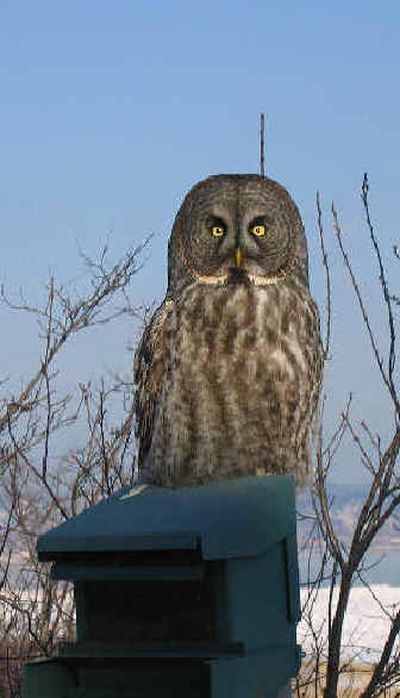Pondering a great gray’s last hours

DULUTH, Minn. — Walking through the woods near my home the other day, I came upon a great gray owl that had died. It was lying atop the snow beneath some alders and young aspen.
I might not have noticed it except that one of my yellow Labs apparently had caught scent of it. The dog was approaching the owl cautiously, as if it didn’t quite know what to make of the bird.
I picked up the owl. Its body was cold, but its feathers were still soft and pliant. There was no sign of blood or a struggle. I took off my glove and felt the bird’s breastbone. It was very prominent, with little meat on either side. I suspect the owl had succumbed to starvation.
It’s well-known that hundreds of owls have come south from Canada this winter in search of prey. Voles and mice are evidently in short supply up north. Birders in Duluth report more than 1,300 great grays across northern Minnesota, far more than in a typical winter. Northern hawk owls and boreal owls also are present in great numbers.
Great grays are magnificent creatures, more than 2 feet tall yet weighing scarcely three pounds. When the ground is snow-covered, great grays can hear small rodents moving a foot beneath the surface. The owls can plunge through the snow to that depth and seize their prey. Great grays are long-lived birds, and in captivity have survived to 40 years old.
Initially, I was philosophical about the great gray owl I found. In the natural scheme of things — survival of the fittest — some great grays aren’t going to make it this winter. Those which choose the most productive hunting grounds, those most efficient at conserving energy, will make it. Some won’t.
But then I got to thinking about that owl’s final hours. I realized that at some point, it had been perched on a branch in one of those bare trees. Too weak to hunt, it could only sit and try to endure the cold. When it could hold on no longer, it had simply pitched forward, landing on the snow. The impact must have been nearly soundless.
I felt a deep sadness thinking about that moment.
Had I not come by to claim the owl, the ravens likely would have found it. Or a fox. Little goes to waste in the winter woods.
As it is, I delivered the owl to the nearby Hartley Nature Center to see if the staff there wanted it. The center took the owl and will use it in teaching some of the 12,000 school kids who visit each year.
The owl is thought to be the same one that often perched on a bluebird nesting box near the center and was observed by many visitors.
I’m glad the great gray will be able to serve some greater purpose in death.
And I’m sure that for years, when I pass that spot in the woods, I will think of the owl and its struggle to endure a northern Minnesota winter.